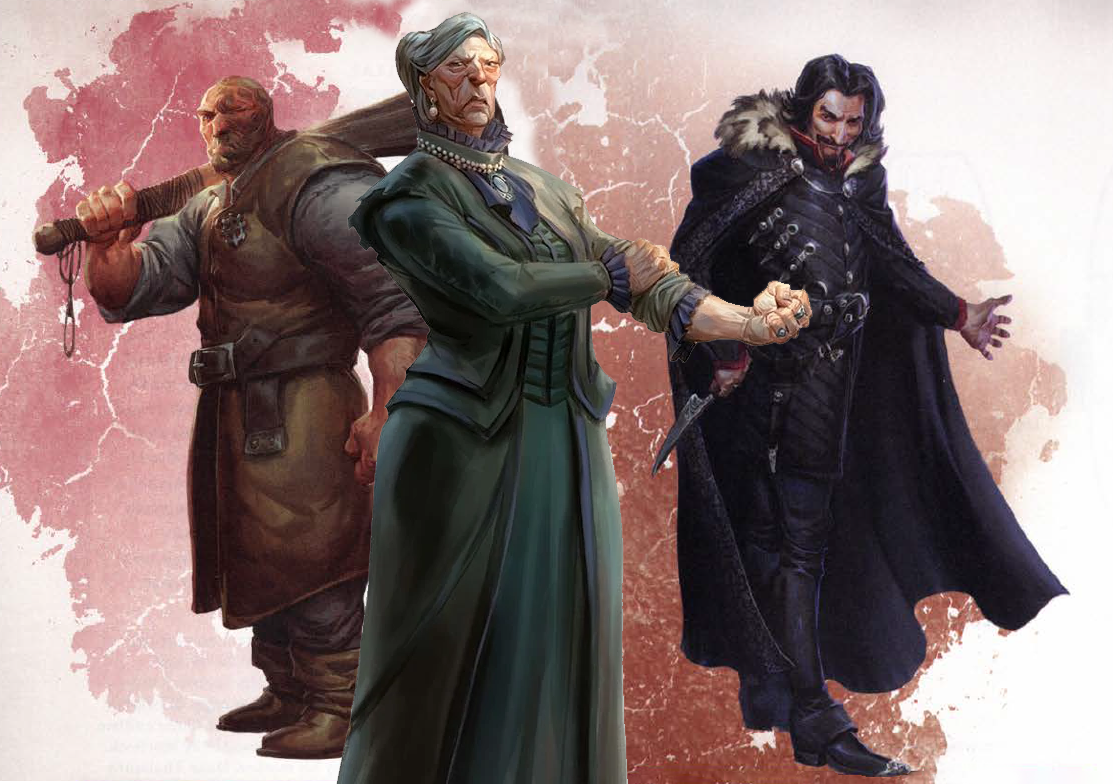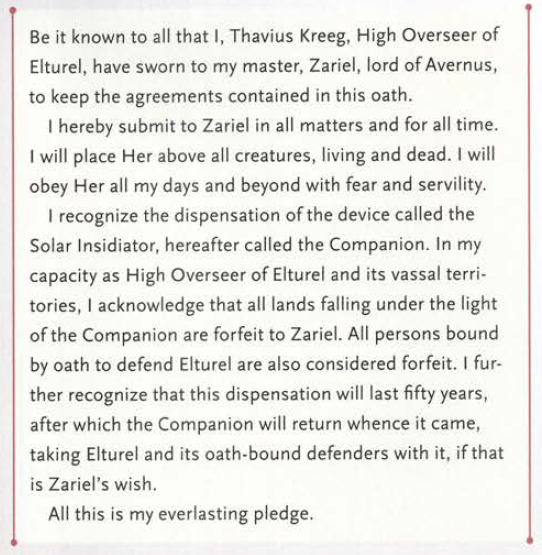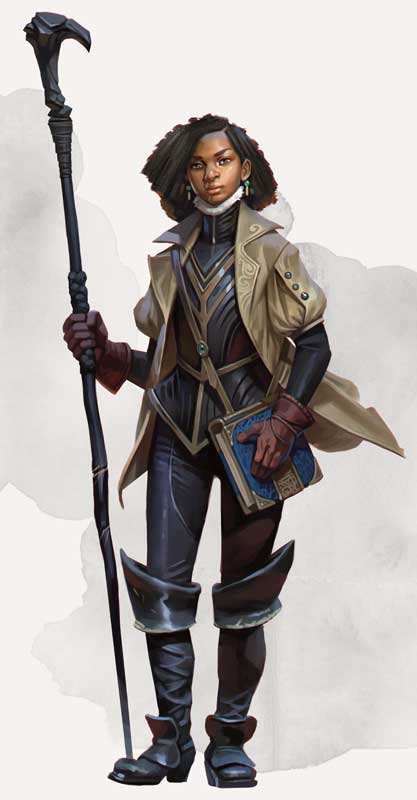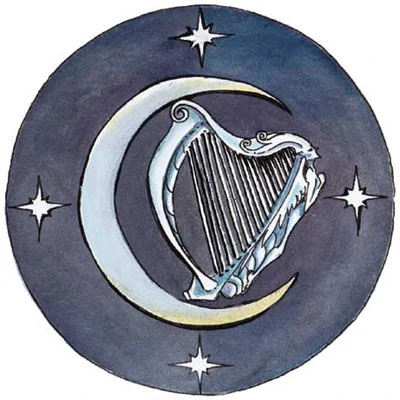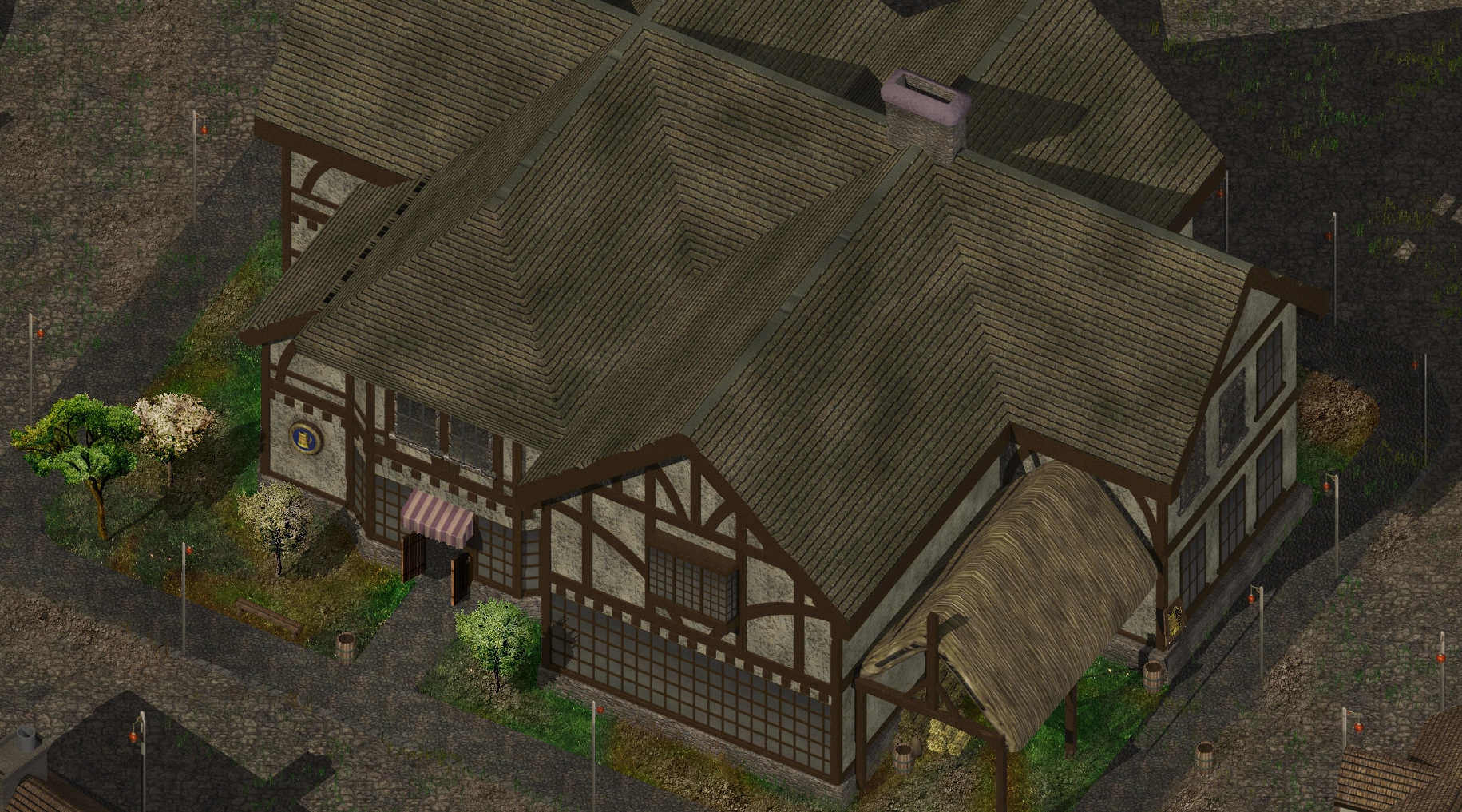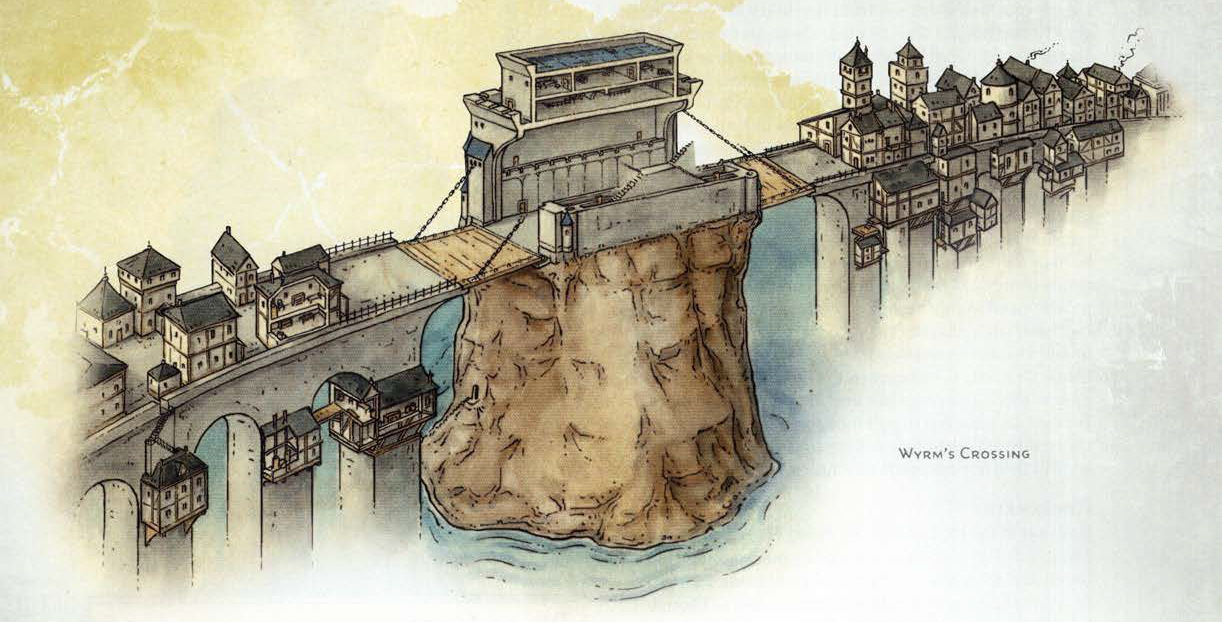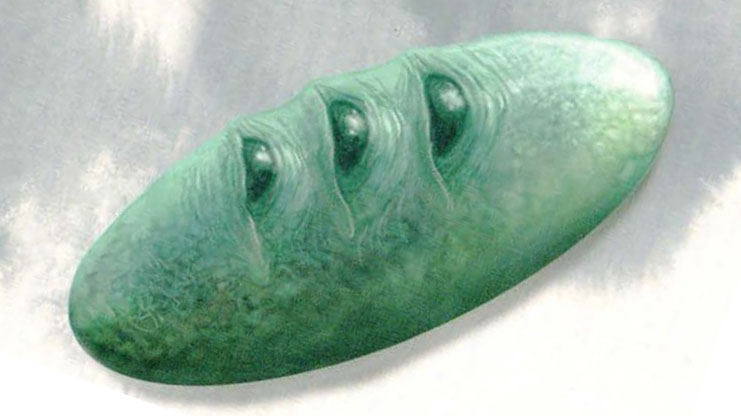We’ll be cleaning up the lore and structure of the Vanthampur Investigations. For the purposes of the Remix, this post should be considered authoritative: Any place where this material contradicts the published version of Descent Into Avernus is almost certainly a deliberate change made to fix continuity problems. Ignore the published version and use the continuity described here.
LORE OF GARGAUTH
Gargauth (referred to in some ancient texts as Gargoth) is currently trapped in the Shield of the Hidden Lord, which is being carried by High Observer Kreeg. A quick overview of his history:
- Gargauth first rose to prominence in Hell in the early days of the Blood War when he discovered that the demon Astaroth had infiltrated Asmodeus’ court and actually managed to become Treasurer of Hell. With his deception revealed, Astaroth fled. As a reward, Asmodeus made Gargauth the new Treasurer of Hell.
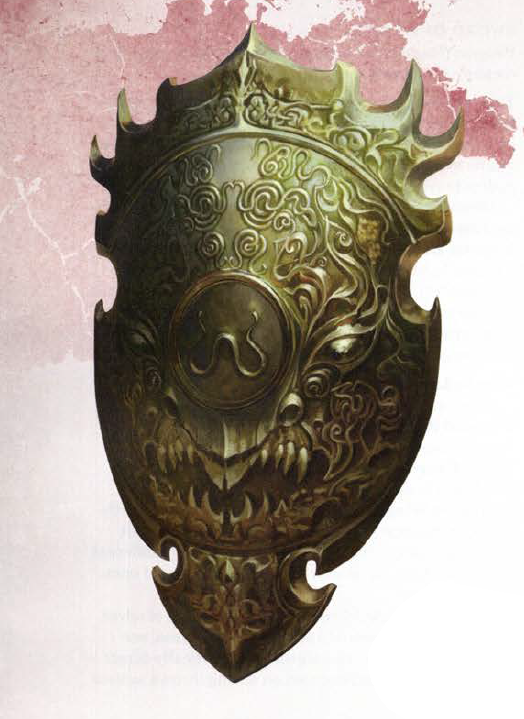 Gargauth’s rise continued until he was named an Archduke, ruling over Avernus as one of the Lords of the Nine.
Gargauth’s rise continued until he was named an Archduke, ruling over Avernus as one of the Lords of the Nine.- He was overthrown by Bel, who had risen from a lowly lemure before engineering the coup that left him in charge of Avernus. (Bel, in turn, would be overthrown by Zariel.)
- Gargauth then chose to leave Hell and journey on the Material Plane. He became known as the Tenth Lord of the Nine, the Lost Lord of the Pit, the Hidden Lord, the Outcast, and the Lord Who Watches.
- Gargauth’s ancient feud with Astaroth had never truly ended. Astaroth, for his part, had become a demigod in his own right and was on the cusp of achieving godhood itself, with a number of cults scattered across Faerûn. Gargauth sought out Astaroth and slew him before he could immanentize his divinity. (Some claimed that this was done at Asmodeus’ behest, and that Gargauth, despite having been “cast out” of Hell, was actually still loyal to Asmodeus.)
- Gargauth actually assumed Astaroth’s mantle for himself, effectively impersonating the dead demon and receiving the worship of Astaroth’s cultists. It was Gargauth’s first taste of godhood.
- Perhaps overconfident in his new power, Gargauth joined an alliance of the Dark Gods (Bane, Bhaal, Loviatar, and Talona) to invade Hell itself and seize it from Asmodeus.
- The invasion failed. Gargauth himself was captured. Asmodeus offered him a choice between utter destruction and a pact. Gargauth chose the pact and Asmodeus bound him into the Shield of the Hidden Lord. In order to be freed from this bondage, Gargauth must bring thirteen cities to Hell.
- The Shield was then given to Bel, who was then in charge of the Dock of Fallen Cities (see Part 5; the charge has since passed to Zariel). He cast Gargauth out onto the Material Plane, and Gargauth has been working on his charge ever since. (Elturel may or may not have been his first success. Perhaps cities far from the Sword Coast have been taken. Or it is possible that there are, in fact, many Shields of the Hidden Lord, with Gargauth’s essence refracted across a multitude of Material Planes.)
- In the case of Faerûnian history, the Shield has been prized by Astarothian cultists (who still hear the voice of their God in it), Dead Three cultists (who honor Gargauth for his alliance with the Dark Gods), and the Cult of Zariel (see below).
- In one notable instance, Dead Three cultists managed to temporarily free Gargauth from the Shield (or possibly just manifest his Avatar from it) as part of an assault on the Sign of the Silver Harp, an inn that was used as a gathering place for the Harpers in the 11th It turned out the entire affair was an elaborate trap set by Elminster and Khelben Arunsun, and Gargauth ended up defeated and back in the Shield. (See Code of the Harpers, p. 27.)
- In the early 14th century, Gargauth infiltrated the Knights of the Shield. The Knights had originally been dedicated to the Shield of Silvam (one of the Kuldannorar artifacts once held by the Tethyrian royal line, see Lands of Intrigue: Book Three, p. 26), but Gargauth corrupted an inner cabal of the Knights. Because the original Shield of Silvam had been lost, this inner cabal was able to create a “secret history” that Duke Tithkar Illehhune in the 9th century had brought the shield to be safeguarded by the Knights in their sanctum. Those inducted into the “inner mysteries” of the Knights believed that the Shield of the Hidden Lord was actually the Shield of Silvam, and Gargauth became the object of their veneration.
- Gargauth has historically been interested in seeking out the method by which Toril was sealed from the other planes during the Time of Troubles, believing that if he could replicate this it would both free him from the Shield and perhaps allow him to seize a great deal of divine power while the other powers are cut off from the Realms. His agents are reportedly scouring many ancient ruins of the Imaskari Empire, whose wizards managed long ago to partially bar the Mulhorandi and Untheric pantheons from entering the Realms (see Powers and Pantheons, p. 23).
- Gargauth has most recently been working with the Cult of Zariel in Elturel (see below). The Shield was taken to Elturel by a member of the Hhune family (who were part of the inner cabal of the Knights of the Shield).
Option: If you’d rather cleave a little closer to the established history of Gargauth — which, as we described in Part 3, featured him being an unfettered demigod until during or sometime after the Spellplague — simply flip him out for a completely different pit fiend with the same backstory described here. For more on Gargauth, check out Powers & Pantheons (p. 23).
We’re also going with Descent Into Avernus’ version of the history between Bel and Zariel. It’s completely inverted from Guide to Hell (p. 39), Book of Vile Darkness (p. 143) Fiendish Codex II (p. 35), and Rise of Tiamat (p. 10) in which Bel overthrew Zariel (the original Lord of Avernus!) and not the other way around, because the original version of the continuity is completely incompatible with the story of Descent Into Avernus. What I’ve done here is essentially insert Gargauth into the original role of Zariel in the story, creating a chain of succession from Gargauth to Bel to Zariel which, through the Shield, gives the PCs a window into the politics of Hell.
If you want to instead maintain the “Zariel was the original ruler of Avernus” continuity, replace Zariel’s role in Descent with a different Archdevil; one of the Dark Eight would work well because they’re regularly killed and replaced (making it easy for the fallen celestial who led the Charge of the Hellriders to have become one of Avernus’ generals).
THE CULT OF ZARIEL
The Cult of Zariel is briefly described in Mordenkainen’s Tome of Foes (p. 21). As Archduchess of Avernus, Zariel oversees the armies fighting at the front lines of the Blood War, and her focus is usually on the corruption of knights, mercenaries, and soldiers who can most aid her cause. It is particularly effective to corrupt 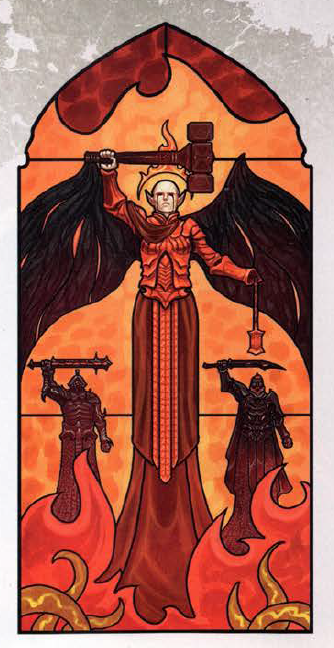 entire knightly orders or mercenary companies, institutionalizing Hell’s recruitment, and it’s not unusual to find the Cult of Zariel working from within such organizations, often having hollowed out the original leadership and purpose.
entire knightly orders or mercenary companies, institutionalizing Hell’s recruitment, and it’s not unusual to find the Cult of Zariel working from within such organizations, often having hollowed out the original leadership and purpose.
There are actually two different Zariel cults in the Remix, although they’re working together closely enough that the PCs may not make the distinction between them. (They don’t really need to.)
The Vanthampur cult in Baldur’s Gate is relatively new. Their primary goal is to seize power in Baldur’s Gate. In addition to all the normal advantages to be gained from such temporal power, they particularly want to corrupt the Flaming Fist and turn the whole mercenary company into a recruitment drive for the Blood War. Towards this end, Duke Vanthampur arranged for Grand Duke Ravengard to be present in Elturel when it was sucked into Hell. She’s also planning to assassinate Duke Portyr in order to further the power vacuum.
The Cult of the Companion has been secretly wielding power in Elturel for generations. They forged the original pact with Zariel for the Companion (see Part 4B), and their current leader is High Observer Thavius Kreeg himself. They have been guided in these actions from the beginning by Gargauth, speaking from the Shield of the Hidden Lord, which has been a prized artifact of the cult.
THE MURDERS
Having been utterly triumphant in their schemes, the Cult of the Companion is now working mop up.
We’ll discuss the details and specific history of the infernal pact that doomed Elturel in Part 4, but there’s one thing we need to know now: Anyone descended from a Hellrider or a member of the Order of the Companion has had their soul forfeited to serve as a devil in Zariel’s armies after their death. Those who were in Elturel at the time of its fall have already been taken, but a number of descendants either escaped the city or weren’t in the city at the time of its fall. If they die before Elturel sinks into the Styx (and the pact is completed), however, then their souls will also be sucked to Hell.
The Cult of the Companion is therefore working with the Vanthampur cult to hunt down Hellriders and their descendants in Baldur’s Gate and murder them. Think of it as a final recruitment drive.
DEAD THREE CULTISTS
The Cult of Zariel has reached out to local Dead Three cultists for the manpower they need to identify, locate, track, and murder Hellrider descendants. This alliance was primarily forged because the Dead Three cultists still venerate the Shield of the Hidden Lord and view Gargauth’s pronouncements as coming from their dark gods, but Duke Vanthampur was able to sweeten the deal by offering them an ancient temple site dedicated to the Dead Three.
Duke Vanthampur, who manages the city’s water utilities and sewer system, originally became aware of this temple when a sewer work crew accidentally broke into it. She had the sewer breach sealed, killed the workers who’d done it, built a bathhouse over the temple site in order to gain access to it, and then killed the workers who’d done that work, too.
She didn’t really have a specific purpose for it at the time, but figured having a private underground lair would come in useful at some point. The complex has been used at various times to store drugs, slaves, and other illicit goods. The Vanthampurs have also used it to hold and torture prisoners. Unfortunately, the contamination of the air by subterranean gases (see Part 3F) has limited its utility and, therefore, value. The Dead Three cultists nevertheless consider the restoration of this holy site an almost incomparable gift, putting them deeply in Duke Vanthampur’s debt.
Note: In the adventure as published, the relationship between the Dead Three cultists and the Vanthampurs is confused. In some places it’s suggested they’re allied to common purpose (although it’s not certain what that is); in other places the Vanthampurs are just paying the Dead Three cultists to kill people. But if the Dead Three cultists are just mercenaries, then it’s unclear why the Vanthampurs have built a temple dedicated to the Dead Three in the dungeon they found/own. The revision of lore found here attempts to simplify, straighten out, and strengthen this continuity.

